What Is Cross-Contamination in Food Production?
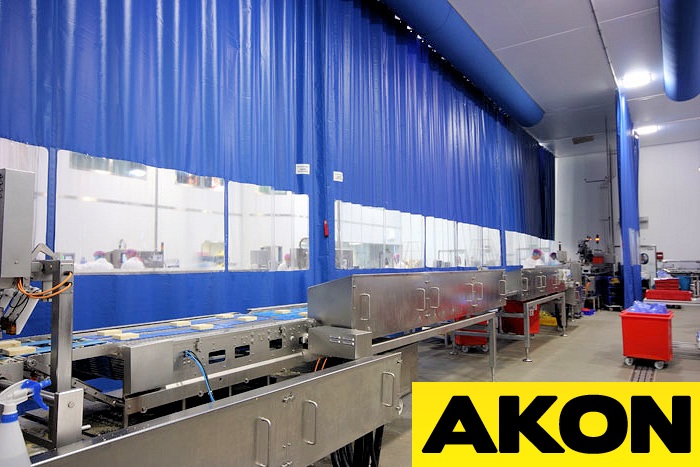
What is It?
Cross-contamination is the transfer of microorganisms, allergens, and foreign substances from one surface or substance to another due to unsanitary handling. The three most common sources are other food (such as raw meat), dirty equipment (such as utensils with leftovers), and the people who handle the food (such as a cook without safety gloves). Often, cross-contamination occurs between raw foods and ready-to-eat products. Cross-contamination can lead to food poisoning, so sanitary standards must be high at all times. During food production, there is a risk dangerous bacterium from raw meat or dirty surfaces might transfer itself on top of cutting boards, utensils, or meals. Raw meat, poultry, and seafood are the most likely carriers of contaminants. These foods must stay in containers; away from ready-to-eat products. Keep foods apart and reduce the chances of serious foodborne illnesses.
Why Its Important
Cross-contamination can occur during any one of the four main food preparation stages: production, processing, preparation, and distribution. A strict cross-contamination strategy will help clear up flaws in the process flow and prevent dangerous bacteria from reaching the final customer. Consumer protection laws demand producers keep things in check.
Since cross-contamination can occur anywhere during the production chain, there must be strict rules in place to prevent potential issues. Properly understanding the causes will make prevention easier. We now know what cross-contamination is. The next part of our blog will discuss which are the three most common causes of cross-contamination.
Easy Install
Food processing cross contamination curtains come with grommets at the top making hanging the curtains quick and easy with or without the curtain track.
Food Dust
Food preparation cross contamination dust is contained thus protecting other food processing activities in the plant.
Inexpensive
The curtains are about 1/3rd of the cost of other separation methods such as rigid walls or panel systems and are easy to store.
Control Noise
USDA Dust control curtains help reduce noise due to the thick PVC they are made from which makes for a more comfortable work environment.
What Are The Three Main Causes?
The Food
When cross-contamination occurs in raw foods, there is a chance it might spread across nearby products and tools during direct contact. A great example would be when blood drips away from raw meat onto other products. Without a cover, they will suffer from cross-contamination. The infection can spread throughout the storage and onto the kitchen. The harmful bacteria will eventually find their way into the food stores and restaurants offer. It is of vital importance to double-check every step along the food chain. Direct contact between contaminated raw food and clean products will further spread the problem. One common example would be when we contain food products with pathogens in unstable, leaky boxes. The bacteria will start spreading towards nearby materials and will inevitably cause a disaster.
The Equipment
The kitchen equipment needs regular cleaning for cross-contamination prevention. The inability to do so could put staff and clients alike in danger. Smooth surfaces are the easiest way for contamination to spread and affect food products. Residues from previous meals on plates or cups are one way for the bacteria to begin spreading. These residues act as a conduit. It is where pathogens gather before a serious infection. Without proper washing and good sanitation standards, bacteria will reach other foods are threaten the safety of everyone. Avoid using dirty clothes for cleaning. Avoid using dirty packaging materials, as contamination might have occurred in the recent past. The food containers, cleaning tools, surfaces, utensils, and other kitchen equipment must remain clean and bacteria-free at all times.
People Who Process The Food
A common cause of cross-contamination occurs with the individuals who handle or distribute the food. Often, if a worker handles raw meat without gloves and then touches other food materials without washing, problems could occur. Here, we are talking about Good Manufacturing Practices (GMPs). Every employee needs to follow these rules to prevent microorganisms and allergens from reaching the food. The standards are high for a good reason. Everyone’s safety is at hand, and the GMPs are of great help. By taking shortcuts and not following the rules, cross-contamination might affect the food somewhere on the production cycle. Dirty uniforms, gloves, and boots could hide potential dangers. Never let mud touch the food, as it is likely to cause some form of cross-contamination.
What Are The Dangers?
Health Hazards
As the blog mentions above, the transfer of bacteria between raw food and means is a major threat to the health of clients. The World Health Organization collects data on food poisoning: every year, more than 600 million people worldwide suffer from cross-contamination. That is around 7 percent of the global population. Nearly 420,000 have died from food poisoning during 2018 alone.
Cooking kills bacteria, so ready-to-eat meals such as salads are clean before serving or selling them. However, if these meals come in contact with raw food, cross-contamination could occur. Ready-to-eat products won’t undergo the cooking process again, so new bacteria will remain there and potentially cause food poisoning to clients. Cross-contamination is a leading cause of foodborne illnesses, and we cannot underestimate it.
Often, food mishandling occurs several times before an illness is present. If there are signs of contamination, further mistakes such as undercooking will make the meal more hazardous. Storing the food in unsafe temperatures also is also dangerous. Germs can grow quickly at room temperature. While frying or boiling the food will help, the meal might not be 100 percent safe because germs can produce long-lasting toxins.
It is important to understand where and how it occurs as well as what dangers lay ahead. Employees from the food processing industry need to follow strict sanitary standards. A serious step by step the strategy. We now know what cross-contamination is. The next step in our guide will showcase different ways to successfully avoid it.
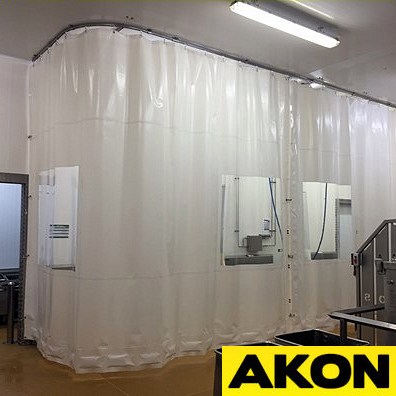
General Methods For Preventing Cross-Contamination
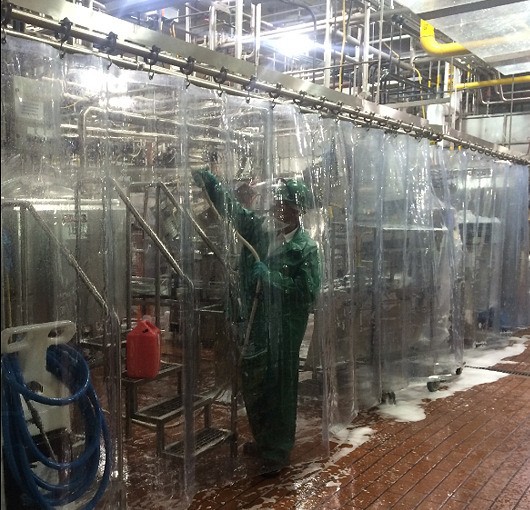
Improvements To Personal Hygiene And Employee Training
If you want to avoid cross-contamination, having healthy, personal hygiene habits are the first step. You can list the habits and create a long-term sanitary plan. Without it, employees handling the food will inevitably cause contamination from their skin, hair, or hands. Employee awareness alone will greatly reduce the chances of food poisoning ever occurring in your restaurant.
Regular bathing, wearing clean clothes, and using hair nets are the essentials.
Another major factor is the employee’s health. If someone doesn’t feel good, they should leave the kitchen and go to a checkup. Sick people could contaminate food or ingredients. It is important to ensure employees are healthy before attending work. Failure to do so might result in disease and illnesses spreading throughout the food products.
Before employing someone, be sure to conduct medical screening. Does the new employee have a bad record of past illnesses? Provide sanitary courses and explain the importance of washing thoroughly and often while preparing meals.
Germs could be present in raw meat, seafood, or areas outside the kitchen. Employees must wash their hands after using the restroom or visiting the storage facility. Washing is also mandatory after touching raw meat. Use paper towels to quickly dry up.
As we mentioned above, the World Health Organization tracks millions of annual foodborne illness across the world. Without proper sanitation, every store or restaurant could hide risks for the clientele. All parties along the food chain must focus on providing safe working conditions. By training your employees, they will develop healthy sanitation habits. You should encourage them to follow these rules and therefore greatly reduce the chance cross-contamination occurring in your kitchen or restaurant. You can add posters next to doors; reminding everyone the importance of personal cleanliness.
Since new regulations come out often, the safety standards will need frequent updates. It would be helpful if the employees receive regular training on food safety. There are different learning styles to choose from. Focus on what works for you and your kitchen will remain free from cross-contamination.
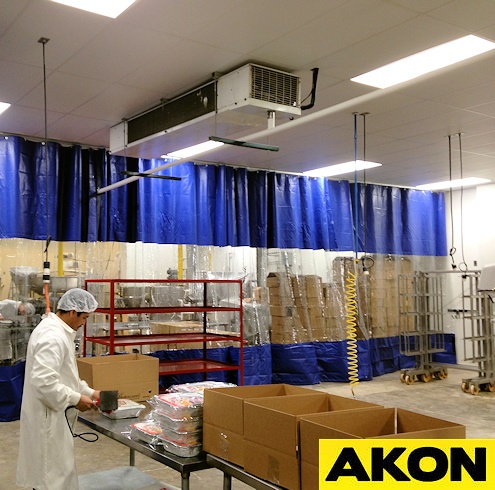
Color Coding And Proper Separation During Storage
An essential cross-contamination prevention rule is to keep bacteria-transferring foods separate. Here is a good example – the equipment for raw meat must never touch a ready-to-eat meal. To avoid such problems, food processing centers can introduce color coding. By separating workstations and equipment, you will greatly reduce the risk of cross-contamination occurring in your restaurant or facility. Color coding can easily separate work areas and save you headaches.
The method is simple – you will be able to visually distinguish the functions of every workstation. By doing that, you can keep pathogens such as E. Coli in check. There is a similar benefit in changing the tools depending on the process. By doing that, you can stop common allergens from causing cross contamination.
In both of these cases, any food production facility which uses color coding will achieve Good Manufacturing Practices (GMP). Being able to identify which areas are in need of sanitization will become easier with color coding. Food production facilities can assign colors depending on product types. Bread can get white, choose yellow, and the milk powder red. Note that the only way a color coding system can work is if there are clear guidelines for the employees. Without knowing which product goes where, a single person can disorganize everything.
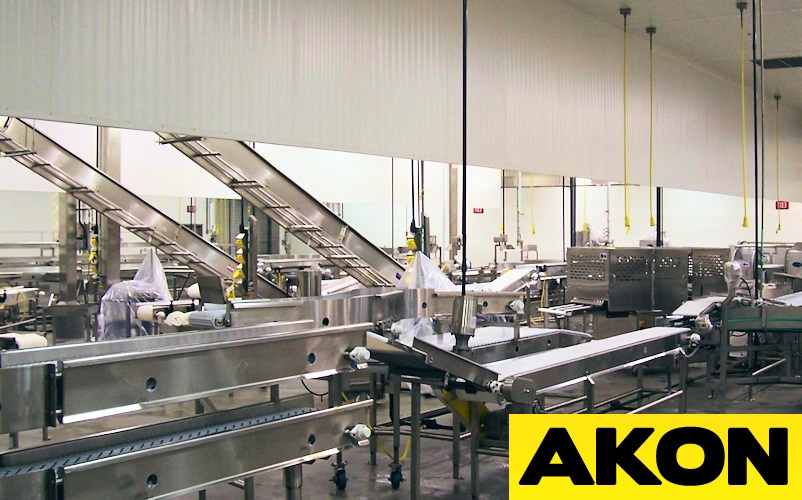
Storage
In your storage, it is essential to use containers specifically for raw meats and dairy products. Other foods must never come in direct contact with these two types. Another important thing to note is the air we breathe – it is fertile and great for spreading germs. The food will spoil quickly if we leave it outside its appropriate container. A good tip would be to use vacuum food sealers. They will draw off air away from the product and leave no germs behind. By utilizing vacuum packaging, you can quickly and easily prevent cross-contamination while keeping your food clean and fresh for longer periods of time. The last tip here would be to keep high-risk products on the lowest level.
Track Food Movement From Raw Material To Final Product
If you want to develop a cross-contamination prevention strategy for your food production facility, an important step would be to track how materials move throughout the company. The starting point would normally be receipting the raw material while the final point is preparing the meal. You need to track how ingredients enter the facility and how they function throughout the production cycle. You can try to move products in different containers and test things out. Is there leakage? Do mold and mildew appear somewhere? Another idea would be to prepare non-allergenic foods first. After they are ready, you can start opening up and cooking the allergens. There must be some form of sanitization active at any step in the food production chain.
Helpful Sanitation And Cleaning Methods
Efficient cleaning will stop germs from spreading and prevent cross contamination the food production. The process needs regular inspections. High-risk areas such as the raw meat container should be the first ones to receive cleaning. Employees must wash and disinfect every tool and surface between cooking tasks.
Clothing can result in cross contamination as well. Employees must change their clothes before the shift starts. Equipment, clothes, and utensils must be fresh before and after preparing a meal. The biggest threats of cross-contamination in a food production facility are the floor and drain. They require daily cleaning and sanitization. While producing food, there must be measures to reduce microbial growth in these two locations.
For a cross contamination plan to work efficiently there must be revisions from time to time. An annual update to the company’s strategy would help. Every time a massive new change happens (such as a new product or supplier), there must be appropriate repairs to the prevention plan. Tackle any weaknesses early on in the production cycle and spare your clients the dangers of food poisoning.
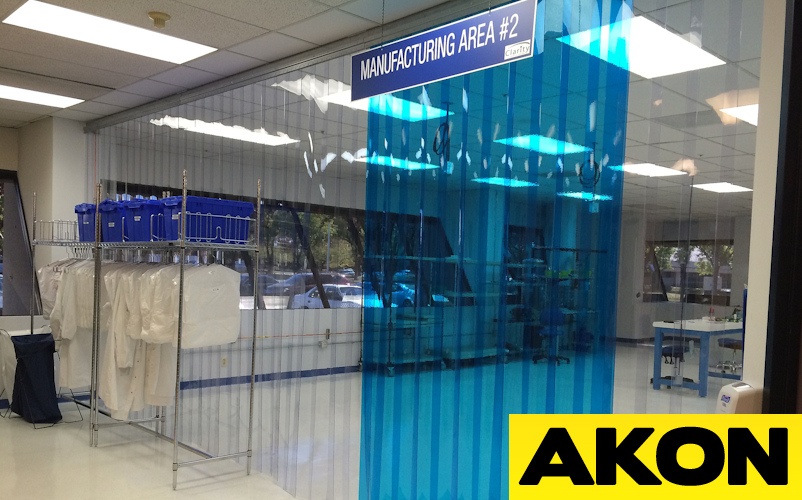
Use A Daily Routine
- Receive deliveries in one room; do the cooking in another. Store the deliveries away from working tables where food preparation occurs
- Store the food immediately after delivery. Do not let it sit outside or in warm areas for
- Raw food and ready-to-eat food must never come in contact. They need separate refrigerators
- Always consider the risks of cross-contamination within raw food. Every piece of meat could have it
- Clean utensils after every use
- You can divide the facility into different chopping boards by coloring them. Appoint specific tasks to every one of the areas and never mix the food
- Chopping boards also need washing. If the side you use is dirty, do not immediately switch to the other one without cleaning up
- Wait out until the utensils are dry and then use them. Most bacteria can spread through water
- Only the people who need to prepare the food should touch it. Anyone outside the production cycle shouldn’t
- Every employee who prepares the food must do an annual checkup at their doctor. Dangerous pathogens could spread from people with infections onto the meals
- Never throw out the garbage while wearing a cooking uniform. Either do that task when the shift is over or let a kitchen assistant do it
Our Solution - AKON’s USDA Wash Down Curtains
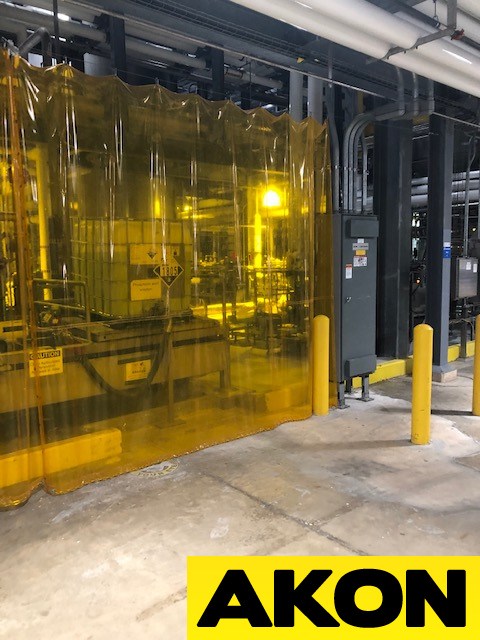
OVERVIEW
AKON can offer your food processing facility the amazing USDA Wash Down curtains. They use non-porous PVC materials which prevent bacteria from growing and contaminating your products. The stainless steel curtain track is not only strong but also stops debris and dust from building up. Our curtains have special features which will improve plant sanitation, lower maintenance costs, and reduce downtime. The materials will keep your kitchen or storage clean while being compatible with the local environment.
USDA Wash Down Curtain Benefits
- A great upgrade to your facility’s sanitation strategy
- Prevents cross-contamination between equipment, surfaces, and different types of food
- The trolley prevents debris and dust build up
- When spraying water, it will remain within the current area
- Overspray, dust, and germs won’t spread out towards other areas
- You can clean only the area around the equipment
- No more expensive downtimes
Key Features
- Slick Surface: The materials are specifically designed to be “slick” which will shed solutions and soils, unlike porous materials
- No Stitching: The hems do not use stitching. If they did, debris would get under the fold and lead to bacteria growth
- Form Any Shape: The curtains can form any shape. You can move them seamlessly around your equipment
- Hardware: The mounting hardware has a stainless steel tubular design with corner carriers. The idea is simple - water and debris will easily roll off the hardware. C channel hardware does not do that and end up could collect debris and potentially harboring bacteria
- Wall Mount: If you cannot support the track from above, there is a side wall mount attachment. You will be able to attach the hardware to vertical surfaces
- Radius Corners: You can add hard or radius corners to the USDA grade hardware. Standard corners are 24 inches and 12″ 90° radius. They can have custom designs
- Stainless Steel Grommets: Stainless steel grommets lie once every 12 inches at the top of the curtain. The top hem has double the durability
Food Processing
Using curtains for food processing in a wash down setting requires careful attention to layout and function. Cross-contamination often leads to food poisoning, and there must be sanitation standards in place to deal with these issues. Our USDA curtains will keep dangerous bacterium away during food production. You can isolate high-risk foods such as raw meat, poultry, and seafood with ease. These curtains will increase production efficiency while decreasing downtime.
Contamination Regulation
If you want to avoid cross-contamination in your food production facility, it is beneficial to have at least one production line operating during washdown procedures in other production lines. Our food segregation curtains will isolate two different production lines from the floor to the ceiling. While you could go with mobile screens and solid curtain walls, they are either too expensive or have penetration points which might lead to cross-contamination or overspray.
Brewery Sanitation
Our clean screen curtains are great not only for food processing facilities but brewing factories as well. The curtains easily separate the kettles and fermentation vessels. Should any splashing occur during the transferring of liquids, it will remain within its own area. The curtains help divide the area for easy wash down and cleaning.
Up To CFIA And USDA Standards
Our curtains meet both the USDA and the Canadian Food Inspection Agency (CFIA) standards. The regulations help companies by ensuring the health and safety of food and food production. Our curtain materials have undergone tests at the CFIA for a full review. The wash down curtains have a CFIA approval.
Superior Overspray And Dust Control
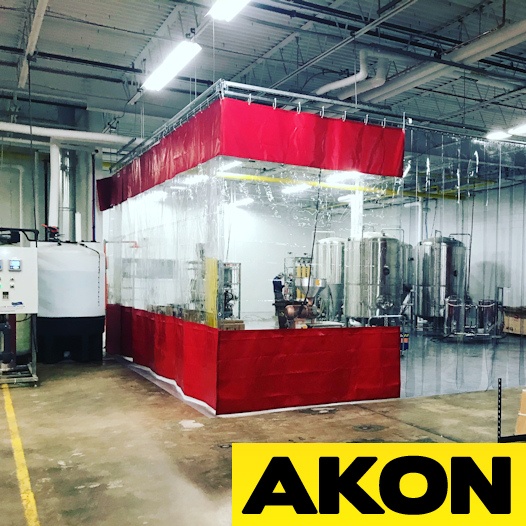
Easily Separate The Facility
AKON’s USDA Curtains will also prevent overspray and food dust build up. We will help you efficiently divide the area and prevent either one from occurring. Controlling dust build up in food manufacturing facilities is of vital importance. It is a life-saving, legal obligation. Large quantities of dust in the working environment can harm employees’ health, reduce product quality, and cause devastating explosions. Combustible dust is a rare event which might hurt or kill workers. A great way to prevent these issues would be to separate the facility with USDA curtains. They will make indoor environments safer for everyone. The curtains will stop traveling dust from escaping the work cell and prevent allergen exposure. Microorganisms will have a hard time spreading. By cleaning your equipment and processing suites on a regular basis, you will prevent cross-contamination from occurring.
Dust Has Negative Effects On Your Employees
Dust might seem harmless to some people, but it poses health risks for the factory’s workers. Regular exposure to dust particles can irritate the skin, eyes, respiratory system, ears, and more. Allergies are another potential issue. Spending a few hours per day in a dusty room might lead to serious long-term illnesses. Slipping accidents could also occur. A number of US states and foreign countries have implemented laws to protect employees from exposure to dangerous substances in the air. Any company which wants to meet these laws must provide a safe working environment for its employees.
Dust Has Negative Effects On Your Equipment
Dust build up will inevitably lead to performance issues. The equipment will lose efficiency and the maintenance costs will start rising. Experiencing frequent downtime will cause further losses. If enough dust manages to build upon the floor, moving materials across the facility will be harder and time-consuming. Internal components won’t escape the issues either. Air filters might clog up and machine parts will suffer damage. If dust piles up on higher levels of your facility or kitchen, the food you prepare will be in constant danger. A strong breeze of air is enough to send the dust flying and contaminating everything.
AKON’s USDA Curtains offer these benefits:
- They cost less than rigid walls such as drywalls and panels
- You can create work cells which allow different processes to occur alongside each other
- Better air quality and worker conditions
- You can quickly and easily roll the curtains out of the way when not in use
- The USDA curtains meet all fire codes and regulations
- The installation process is quick
- You can create your own curtains with custom layouts, dimensions, styles, tracks, colors, accessories, and more
Overspray Can Damage Equipment And Emit Hazardous Toxins Into The Air
When talking about overspray, we refer to airborne particulates which reach unintended locations. The problem is common in spray paint shops, graffiti studios, and auto detailing stores. However, it can occur in kitchens, dining areas, and food warehouses. Preventing overspray from emitting dangerous airborne toxins is a must if you want to avoid cross-contamination. Our curtains are great at doing that. You can choose a model with custom sizes, materials, accessories, colors, and more. Maximize your floor space by dividing the area. With our curtains, you will easily contain paint, food dust, sparks, and water spray.
